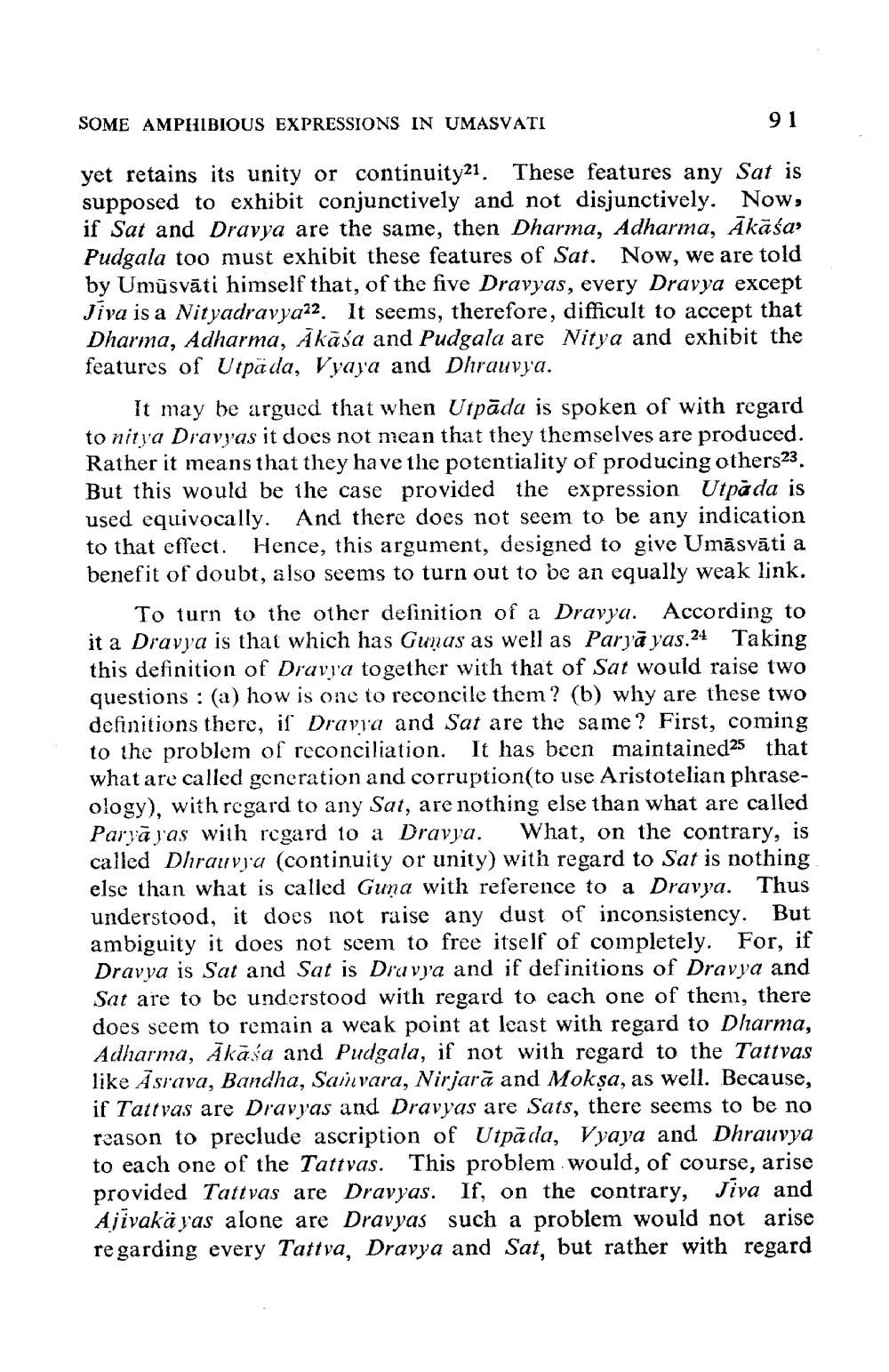________________
SOME AMPHIBIOUS EXPRESSIONS IN UMASVATI
91
yet retains its unity or continuity21. These features any Sat is supposed to exhibit conjunctively and not disjunctively. Now, if Sat and Dravya are the same, then Dharma, Adharma, Ākāśas Pudgala too must exhibit these features of Sat. Now, we are told by Umûsvāti himself that, of the five Dravyas, every Dravya except Jiva is a Nityadravya22. It seems, therefore, difficult to accept that Dharma, Adharma, Äkāśa and Pudgala are Nitya and exhibit the features of Utpada, Vyaya and Dhrauvya.
It may be argued that when Utpāda is spoken of with regard to nitya Dravyas it does not mean that they themselves are produced. Rather it means that they have the potentiality of producing others23. But this would be the case provided the expression Utpada is used equivocally. And there does not seem to be any indication to that effect. Hence, this argument, designed to give Umāsvāti a benefit of doubt, also seems to turn out to be an equally weak link.
To turn to the other definition of a DravyaAccording to it a Dravya is that which has Gunas as well as Paryā yas.24 Taking this definition of Dravia together with that of Sat would raise two questions : (a) how is one to reconcile them? (b) why are these two definitions there, if Dravia and Sat are the same? First, coming to the problem of reconciliation. It has been maintained25 that what are called generation and corruption(to use Aristotelian phraseology), with regard to any Sat, are nothing else than what are called Paryā yas with regard to a Dravya. What, on the contrary, is called Dhrauva (continuity or unity) with regard to Sat is nothing else than what is called Guna with reference to a Dravya. Thus understood, it does not raise any dust of inconsistency. But ambiguity it does not seem to free itself of completely. For, if Dravya is Sat and Sat is Dravya and if definitions of Dravya and Sat are to be understood with regard to each one of them, there does seem to remain a weak point at least with regard to Dharma, Adharma, Äkäsa and Pudgala, if not with regard to the Tattvas like Asrava, Bandha, Saivara, Nirjarā and Mokşa, as well. Because, if Tattvas are Dravyas and Dravyas are Sats, there seems to be no reason to preclude ascription of Utpāda, Vyaya and Dhrauvya to each one of the Tattvas. This problem would, of course, arise provided Tattvas are Dravyas. If, on the contrary, Jiva and Ajivakä yas alone are Dravyas such a problem would not arise regarding every Tattva, Dravya and Sat, but rather with regard




